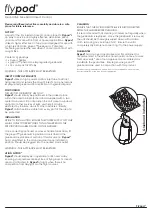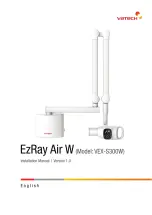
In either positive or negative pressure configurations the airflow in the LFGI is always in the
same direction. To achieve positive pressure the supply blower pushes air into the chamber
faster than it is exhausted. This causes the gloves to push out of the work area. To achieve
negative pressure the exhaust blower pulls air out of the chamber faster than it is taken in.
This causes the gloves to pull into the work area.
The decision to operate the Laminar Flow Glovebox /Isolator under negative or positive
pressure must be determined based on your intended product application, risk assessment
and current regulations. The design of the LFGI series allows a certifier to change the
overall pressure of the unit while in-place. This requires in-depth knowledge of the Laminar
Flow Glovebox /Isolator and its components and should not be attempted by a user.
Containment
The Laminar Flow Glovebox /Isolator maintains containment of the work area through a
series of filters and its stainless steel construction. Joints are welded and polished for easy
cleaning and all modular components are fully gasketed to ensure a gas tight seal. Adjustable
compression hinges and positive-lock latches deliver consistent pressure at door openings.
The two door airlock functions to maintain complete environmental separation between the
room and work area air.
All air entering and exiting the LFGI is HEPA filtered to ensure ambient particulates stay
out of the work area and materials being compounded stay in.
13
Summary of Contents for LFGI-3USP
Page 1: ...Laminar Flow LFGI CAI or CACI User Manual ...
Page 33: ...33 ...
Page 51: ...SECTION IV UNIT DIAGRAM Made in the USA and available for purchase on the GSA 51 ...
Page 55: ...55 ...
Page 59: ...59 ...
Page 63: ...Fig 2 Air recycle plenum connection tip removed 63 ...
Page 85: ... 863 248 2800 www sensocon com 20 Installation and Operation Manual Series A3 A4 ...














































